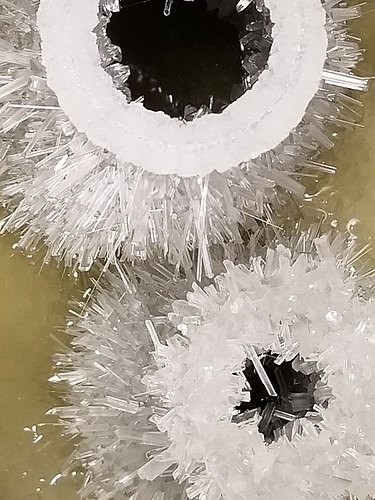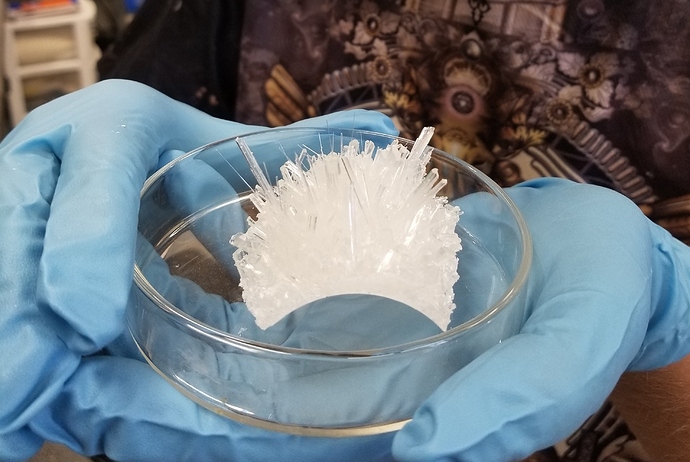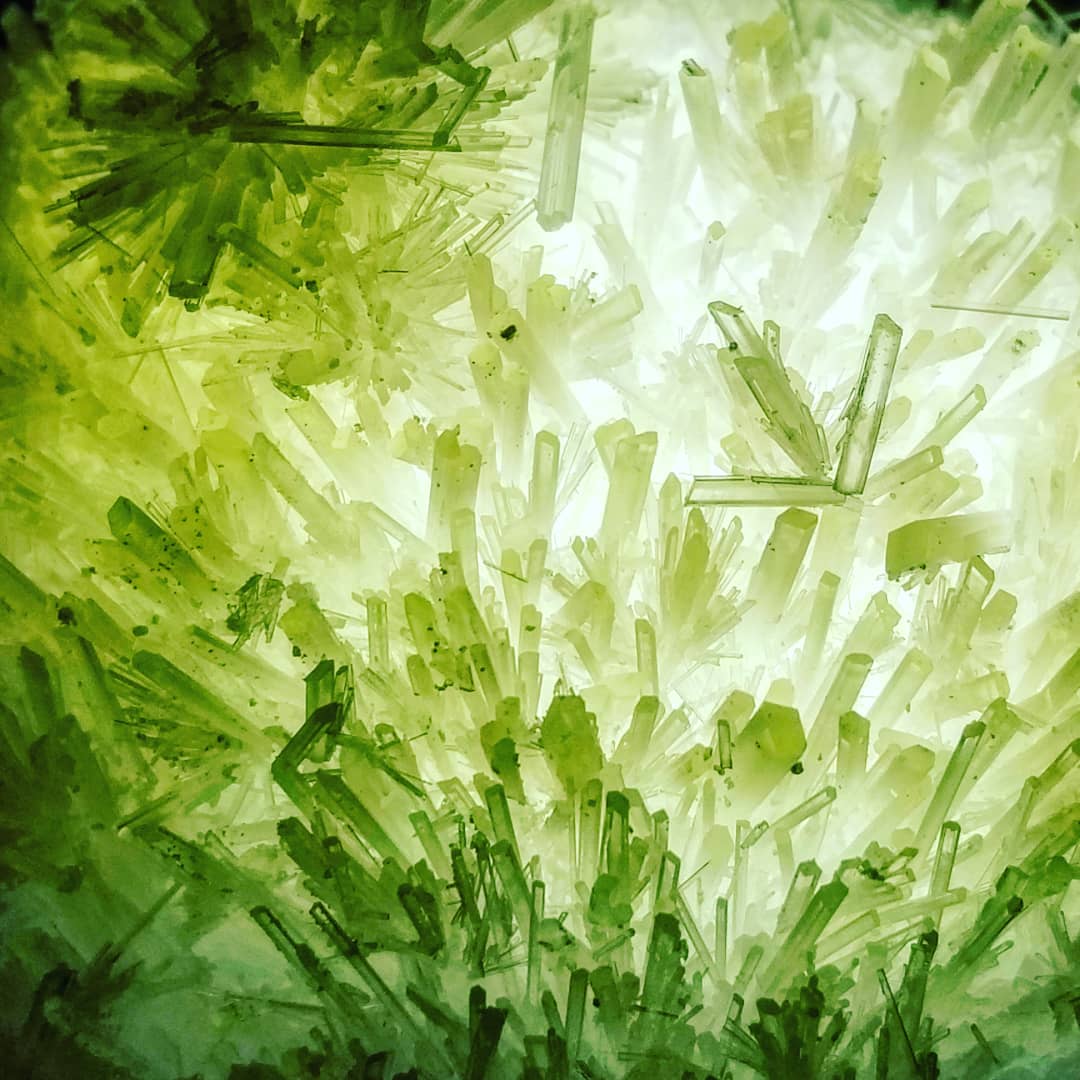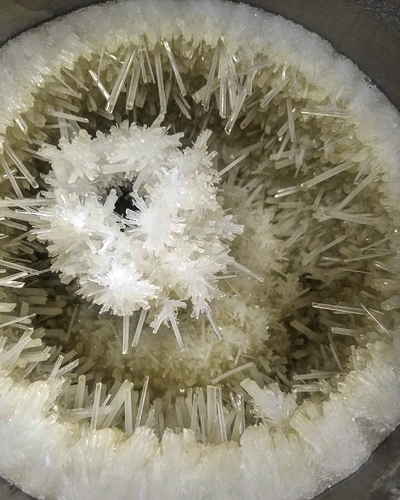Hi.
I have some experiences that I’d be willing to share in the hopes that someone with greater knowledge than myself can help fill in the gaps regarding Headspace volume in a CBD isolation vessel.
When I first started doing medium scale CBD isolations, I was using hexane (terrible idea) with a headspace of 20% of total vessel volume. I switched to heptane, and i noticed different structuring but I kind of saw the same trend using both solvents that I will describe now.
Under employer pressure, I began to cram as much solution as I could into the vessels, lowering my headspace first to 15%, and then to 10%. What I noticed at 10% was I could see a pretty clear variation in crystal structure from the bottom of the tank to the top of the tank. For example, the crystals at the bottom of the vessel would be like those in the pictures. Generally very well formed, beryl type (hexagonal) crystals with glassy sides. However at the top of the vessel, I’d get crystals that much more resemble snowflakes. Relatively irregular, pointy, needle shaped, and crystals projecting out of other crystals. Clarity and color didn’t seem to vary much. Anyway, I backed off a bit, back to 15% and the entire vessel seemed more consistent.
here are my questions.
As far as structure goes, is there an ideal headpsace %? Why?
Does the pressure change as compound is leaving solution and forming crystals?
How does pressure affect structure?
If I switch to a more or less volatile solvent, does that affect the ideal headspace %?
If yes, how should I adjust % volume of the headspace?
I’m likely going to switch to pentane, and beside not wanting to over pressurize the vessels, I want to have solid understanding about crystal growth under different pressures.
If anyone could help increase my understand here, it’d be very much appreciated.
Enjoy my beautiful crystals <3 Sadly I don’t seem to possess pictures of the snow flake type crystals produced at %10 headspace. I forget exactly, i mighta really pushed it and done 8% Hopefully the pics upload alright
Follow me on IG!



